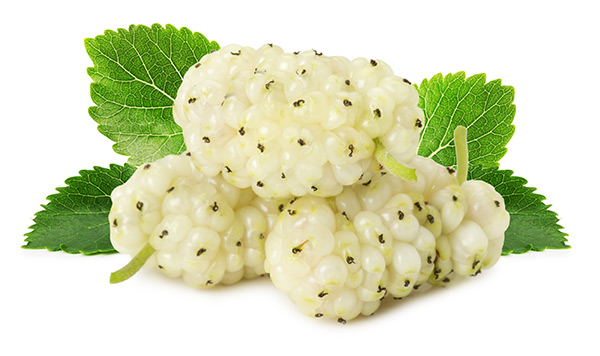12 Essential oils and their biblical references
09/24/2024 / By Olivia Cook

“And they went out… and they anointed with oil many that were sick and healed them.” Mark 6:12-13
Throughout the Bible, oils held a place of reverence – serving both practical and sacred purposes. In the ancient scriptures, oils were more than fragrant substances; they carried deep spiritual meaning and were considered holy symbols of God’s presence, blessing, favor and healing power.
Here’s a look at 12 essential oils and their biblical references where these or their related plants are mentioned. Not all references specify them as oils, but they are part of the biblical traditions related to anointing, healing and purification.
These oils have stood the test of time and have become increasingly popular in alternative health and holistic practices. With modern science confirming their benefits, we realize the depth of ancient wisdom. If we only had known then what we know now about their full range of healing powers, their use might have been even more widespread.
Calamus
- Exodus 30:23 – an ingredient in the holy anointing oil
Acorus calamus, also called “calamus” or “sweet flag,” has been used as a flavoring in cooking and has a long history of medicinal use in many traditional herbal practices. The root (rhizome) is believed to boost sexual health; ease conditions like eczema, parasitic infections and rheumatism; help with digestion and reduce muscle spasms. In traditional Chinese and Indian medicine, the calamus has been used as an anti-aging remedy; to help with issues like epilepsy, leading difficulties and memory problems and to support mental health.
Calamus has shown promise in treating cardiovascular disorders largely due to its high content of phenolic compounds. Research indicates that A. calamus may be beneficial for conditions, like coronary artery disease and high cholesterol – through various actions, such as combating oxidative stress, improving lipid metabolism, lowering blood pressure, preventing blood clots and reducing inflammation.
Casia
- Exodus 30:24 – an anointing oil
- Ezekiel 27:19 – precious commodity
- Psalm 45:8 – a perfume for the king’s garments
Cassia fistula L., also known as the “golden shower” tree, has been studied for its health benefits, including antidiabetic, anti-inflammatory, antimicrobial, antitumor and antioxidant properties. It has also demonstrated hepatoprotective effects. Cassia essential oil’s spicy aroma also promotes a sense of energy and vitality.
Cedarwood
- Leviticus 14, Numbers 19 – a ceremonial tool for cleansing leprosy
- Numbers 24:6, Psalm 92:12, Ezekiel 31:3 – a symbol of abundance and provision
- Psalm 45:8 – a perfume
- Song of Solomon 1:17; 8:9; Zechariah 11:2 – a symbol of security and stability
- 1 Kings, 2 Kings, 2 Chronicles, 2 Samuel, Ezra 3, Ezekiel 17, Jeremiah 22 – the choice wood for building the temple, currently and trading
Steam distilled from cedar tree wood, cedarwood essential oil is versatile and beneficial for various uses, whether diffused or blended with other oils. In aromatherapy, it clears the mind, freshens indoor spaces, promotes relaxation, relieves tension and supports sound sleep. When applied to the skin, it combats dryness, controls oil production, shields against environmental factors and soothes irritation. In hair care, cedarwood oil balances scalp oil and supports healthy hair follicles, improving the feel and look of the hair.
Cypress
- 1 Kings, 2 Chronicles, Isaiah 41 – a choice wood for building the temple, currency and trading
- Isaiah 44:14 – a fragrant hardwood and symbol of security and stability
- Isaiah 60:13, Hosea 14:8, Zechariah 11:2 – a symbol of prosperity
- Nahum 2:3 – the choice of wood for weaponry
Derived from Cupressus sempervirens, cypress essential oil is known for acting as an expectorant and helping to reduce fever by increasing sweat and urine production. When applied topically, it can soothe coughing bouts and irritated airways, especially in cases of bronchitis. It may also provide relief from hemorrhoids and reduce foot sweating.
Cypress essential oil is reportedly safe to use with children, during pregnancy and while breastfeeding. Because it is high in monoterpenes, it should be stored in a tinted glass bottle, ideally in a cool dark place or in the refrigerator, to prevent it from oxidizing. Oxidized oils should not be used on the skin but are still safe for cleaning purposes.
Frankincense
- Chronicles 9, Leviticus 2, 5, 6, 24; Nehemiah 13; Numbers 5, 1 – a part of ceremonial offerings
- Exodus 30:34 – a holy ceremonial perfume
- Isaiah 60:6; Jeremiah 6:20; Revelations 18:13 – a precious commodity (potential currency)
- Mathew 2:11 – one of the gifts of the Magi to the Christ child
- Song of Solomon 3:6; 4:6 – a perfume
Whether applied topically, consumed, or inhaled, frankincense has gained renewed interest as a natural supplement due to its wide range of health benefits. This aromatic resin, especially from Boswellia serrata and B. carterii, is believed to have antibacterial, anti-inflammatory, calming and pain-relieving effects. Studies support its use in treating various inflammatory conditions, like rheumatoid arthritis, as frankincense blocks specific compounds and enzymes that trigger the body’s inflammatory response.
Frankincense also shows potential for easing conditions, like asthma, bronchitis and ulcerative colitis, due to its ability to reduce swelling in the airways and digestive tract. Some studies even suggest it has anticancer properties as it may inhibit the growth of certain tumor cells, including those linked to brain cancer and leukemia.
Galbanum
- Exodus 30:34 – a holy ceremonial perfume
Extracted from the resin of the Ferula galbaniflua, galbanum essential oil is known for its ability to stimulate blood circulation and detoxify the body. This makes it especially helpful for people suffering from arthritis and rheumatism as it promotes blood flow and helps remove toxins, like uric acid, which can cause inflammation and joint pain. It also eases muscle and nerve tension – providing relief from spasms in areas like the intestines, muscles, nerves and respiratory tract.
Additionally, galbanum essential oil reduces scars by promoting the growth of new skin tissue – gradually replacing old scar tissue. As a natural decongestant, galbanum essential oil clears congestion in the airways, lungs, nose and throat – making it useful for bronchitis, colds and coughs. It also helps cleanse the bloodstream, which is useful in treating skin issues, like abscesses, acne and boils. By regulating hormone production, galbanum essential oil can balance sebum levels, preventing skin problems caused by excess oil.
Hyssop
- I Kings 4:34 – mentioned by Solomon in his proverbs and sacred writings
- Exodus 12; Hebrews 9; Leviticus 14; Numbers 19; Psalm 51 – a part of ritual cleansing and ceremonial offerings
- John 19:29 – the sponge that soaked up the sour wine that was given to Jesus on the cross
Six species of the Hysoppus genus are used for both culinary and medicinal purposes – traditionally to treat colds, coughs, loss of appetite, fungal infections and muscle spasms. Key components of the essential oils from Hysoppus include terpenoids. The plants are also rich in flavonoids, like well-studied apigenin, luteolin and quercetin, along with phenolic acids. The natural phytocompounds give its antifungal and antiviral properties. In addition, research has suggested it may relax the plasma membrane, have cytotoxic effects and produce a calming, sedative impact. While generally considered safe, more research is needed to fully understand its complete safety profile.
Myrrh
- Exodus 30:23 – anointing oil
- Genesis 37:25 – a precious commodity – potential currency
- John 19:39 – burial preparations Nicodemus used for Jesus in the tomb
- Mark 15:23 – mixed with wine and given to Jesus on the cross
- Mathew 2:11 – one of the gifts of the Magi to the Christ child
- Proverbs 7:17; Psalm 45:8; Song of Solomon 1:13, 4:14, 5:13 – a perfume
- Song of Solomon 3:6, 4:6 – an incense
- Song of Solomon 5:1 – mixed with edible spices to be eaten
- Song of Solomon 5:5 – an ointment
Phytochemical research reveals that Commiphora myrrh is rich in essential oils, as well as terpenoids. Its essential oils find diverse uses in aromatherapy, cosmetics and perfumery. Studies indicate that it can combat microbes and respiratory infections, ease pain, expel parasites, fight cancer and oxidative stress, lower diabetes risk, protect nerves and reduce inflammation.
Olive oil
- Exodus 27:20 – used to fuel the lamps in the Tabernacle
- James 5:14 – Believers are instructed to anoint the sick with oil and pray for their recovery
A 2021 review in Frontiers in Pharmacology, indicated that polyphenols in olive oil, especially extra virgin, boost the immune system by enhancing white blood cell proliferation and influencing cytokine production, which strengthens immunological resistance. Extra virgin olive oil’s potent antioxidant properties reduce inflammation, protecting the liver from damage and preventing the progression of steatohepatitis. Additionally, the monounsaturated fatty acids in olive oil, particularly oleic acid, may positively impact lipid peroxidation and provide hepatic or liver protection.
Rose of Sharon (Cistus)
- Song of Solomon 2:1 – a reference to the “Beloved”
Rose essential oil has been found to ease anxiety and depression and reduce pain. A study in the Iranian Journal of Nursing and Midwifery Research showed that children who inhaled rose essential oil after surgery experienced less pain – likely due to the release of endorphins, the body’s natural “feel good” hormones. Rose oil has also been helpful for menstrual discomfort as a study in the Journal of Obstetrics and Gynecology found that women who received an abdominal massage with rose essential oil reported less cramping than those who used only almond oil.
The oil also boasts anti-bacterial and anti-fungal properties – helping fight infections, like Escherichia coli and Candida, which can cause yeast infections. In one study in Complementary Therapies in Clinical Practice, postpartum women who received rose essential oil aromatherapy, along with conventional treatment, experienced significant improvements.
Sandalwood
- John 19:39 – burial ointment for Christ
- Numbers 24:6 – a symbol of abundance and provision
- Psalm 45:8, Proverbs 7:17 – a perfume
- Song of Solomon 4:14 – an incense
Sandalwood oil continues to be prized for its calming and grounding properties. It is commonly used in meditation and yoga practices to promote emotional balance and mental clarity, as well as in skin care for its anti-aging properties. Recent studies confirm many sandalwood essential oils’ use in treating colds, digestive issues and urinary infections. Sandalwood oil and paste for their cooling effects and to enhance beauty; its scent is believed to help relax and naturally uplift mood.
Alpha-santalol, its key ingredient, shows potential in fighting cancer by stopping cancer cells from growing and causing them to die, though more research is needed to fully understand this.
Spikenard
- John 12:3; Mark 14:3; – a costly ointment/perfume used to anoint Christ
- Song of Solomon 1:2 – a royal fragrant aroma
- Song of Solomon 4:13-14 – a prized, desired plant
American spikenard (Aralia racemosa L.) has a historical background as a medicinal plant but modern research is limited. In 2011, the Research Journal of Pharmacy and Technology showed that extracts from its roots have notable analgesic effects. Unfortunately, spikenard is critically endangered due to over-harvesting for essential oil production with its range of phytocompounds, including flavonoids, glycosides, phenols, saponins and terpenoids found in its leaves, after a chemical analysis done in 2016, as indicated in Pharmacognosy Journal.
Spikenard essential oil is valued for its ability to address menstrual issues, muscular spasms, nervous tension, neuralgia, physical tension, sciatica and other stress-related conditions. It also helps alleviate anxiety, ease bodily congestion, improve aging skin and promote better sleep.
Watch this video about essential oils of the Bible.
This video is from the Daily Videos channel on Brighteon.com.
More related stories:
Essential oils: Must-have items from Mother Nature for your survival cache.
A basic guide to blending essential oils at home.
How to use essential oils to increase your odds of survival in almost any situation.
Sources include:
Submit a correction >>
Tagged Under:
alternative medicine, anti-aging, anticancer, antiviral, aromatherapy, Bible herbs, Cosmetics, diabetes cure, healing, heart health, herbal medicine, natural antibiotics, natural cures, natural health, natural medicine, Naturopathy, pain relief, prevention, religion, remedies, skin health, survival
This article may contain statements that reflect the opinion of the author
RECENT NEWS & ARTICLES
HealthScience.News is a fact-based public education website published by Health Science News Features, LLC.
All content copyright © 2018 by Health Science News Features, LLC.
Contact Us with Tips or Corrections
All trademarks, registered trademarks and servicemarks mentioned on this site are the property of their respective owners.


















